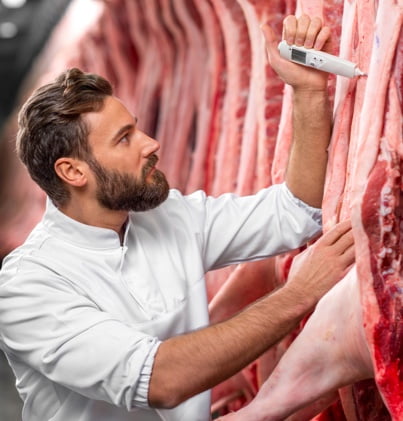Widam Food sells various types of live and frozen meat products, such as:
Live and locally slaughtered Lamb from Australia, Syria, Sudan, Pakistan and India
Live and locally slaughtered beef from Sudan
Frozen and cooled beef from Australia and Somalia
Premium cuts from Brazil, Australia and the USA
We proudly work with over 200 corporate customers in Qatar. See below for some of our biggest customers to date:
























Nutritional Value
Meat is an iron-rich source containing protein, keratin, minerals like zinc and phosphorous, as well as vitamins B1 and B2. Red meat is full of Alpha Lipoid Acid (ALA), which provides essential antioxidant qualities to maintain peak physical health.
In order to ensure your meat is optimal quality, it is essential to follow strict health and safety guidelines during storage, freezing, and preparation. Read our tips for best practices below:
It is essential to store and prepare meat in a safe manner, to stop the spread of bacteria and avoid health complications like food poisoning.
Make certain to store raw meat in clean, sealed containers, placing them on the bottom shelf of your fridge to ensure that the meat does not come into contact with other food.
Follow the storing instructions that appear on the label, and do not consume the meat after the mentioned “Use By” date.
If you wish to cook the meat for later use, be sure to cool it quickly and place it in the fridge or freezer—remember to always keep cooked meat separate from raw meat.
Be sure to thoroughly clean your hands, plates, utensils, and surfaces after they come into contact with raw or thawing meat.

It is safe to freeze raw meat provided that you:
Be sure to keep your thawing meat in a sealed container at the bottom of the fridge to avoid the liquid spreading to any other food, surfaces, or utensils.

Cooking meat the right away ensures that any harmful bacteria is eliminated. Meats such as poultry (chicken, turkey, duck, goose); burgers and sausages; kebabs; and rolled joints of meats need to be cooked well all the way through until their juices run clear and there is no remaining pink or red meat.
You can consume whole cuts of beef or lamb such as steaks, cutlets, and joints when they are pink inside, or “rare”, as long as they are cooked on the outside.

The liver in all slaughtered animals can be highly nutritious and delicious! It is rich in vitamin A, easy to digest, low in fat and calories, and replete with iron.
That said, we should be wary of over-consuming liver, as excessively high levels of vitamin A can be detrimental to our bodies, especially in old age. However, it is still important to be cautious and avoid the over-consumption of liver. Excessively high levels of vitamin A may be detrimental to the body, especially in those of older age.

In order to ensure your meat is optimal quality, it is essential to follow strict health and safety guidelines during storage, freezing, and preparation. Read our tips for best practices below:

It is safe to freeze raw meat provided that you:
Be sure to keep your thawing meat in a sealed container at the bottom of the fridge to avoid the liquid spreading to any other food, surfaces, or utensils.

Cooking meat the right away ensures that harmful bacteria is eliminated. Meats such as poultry (chicken, turkey, duck, goose); burgers and sausages; kebabs; and rolled joints of meats need to be cooked al the way through until their juices run clear and no pink or red meat is left inside.

The liver in all slaughtered animals can be highly nutritious and delicious! It is rich in vitamin A, easy to digest, low in fat and calories, and replete with iron.
That said, we should be wary of over-consuming liver, as excessively high levels of vitamin A can be detrimental to our bodies, especially in old age. However, it is still important to be cautious and avoid the over-consumption of liver. Excessively high levels of vitamin A may be detrimental to the body, especially in those of older age.
